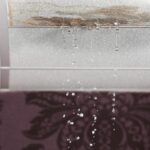
If you are a passionate amateur gardener, you know the frustration of weeds all too well. They compete with other plants for water, light and nutrients, their roots can crowd the growing system, and as if all that wasn’t enough, they look bad. In your ongoing efforts to keep weeds at bay, you may have come across the herbicide Treflan. Maybe you even have a bottle or two hidden in the barn. But what is Treflan herbicide? Is it safe? Is it effective? And most importantly: Should you use it? First, let’s look at the central theme. What exactly is Treflan? Treflan is a type of selective herbicide used to control the growth of herbaceous weeds and certain broadleaf weeds. It is widely used in commercial vegetable farming, but is also used by hobby gardeners as a weed killer for ornamental and vegetable crops.
Is Treflan safe?
No matter how effective the product, safety is of the utmost importance. So, is Treflan safe? Should we think twice before waving it around in the garden? Treflan’s main ingredient is trifluralin, a weedkiller that has been linked to deformities in animals, according to the U.S. Environmental Protection Agency website. Dogs exposed to the ingredients showed weight loss and blood and liver abnormalities when tested. In rodents, a significant increase in tumours, skeletal abnormalities and reduced fetal weight were observed after exposure. Aquatic flora and fauna also react negatively to the effects.
With humans, the situation is a little more complicated. Although trifluralin is currently classified by the U.S. EPA as a Group C, possible human carcinogen (causes cancer), the long-term effects of inhalation or direct skin contact are unknown. Short-term side effects include skin and eye irritation. If swallowed, seek medical advice immediately. Induced vomiting should be avoided because aspiration of the chemical into the lungs may be harmful. Although indirect exposure is not considered hazardous, precautions should be taken (including using the product only in well-ventilated areas with goggles and protective clothing).
When should Treflan be used?
According to ehow.com, gardeners with Treflan should only treat vegetables that are compatible with its use. These include cabbage, beans, broccoli, peas, kale, peanuts, transplanted tomatoes, transplanted peppers and various other crops that are listed on product labels. Since not all vegetables or plants are compatible with Treflan, the application can be facilitated by planting Treflan-compatible vegetables/plants on one side of the garden and non-compatible options on the other. The timing of the introduction of Treflan is crucial. As recommended by Hunker.com, it should be added to the soil in early spring, either just before planting or three weeks before planting. To slow the growth of weeds the following year, it can also be applied before the first frost in the fall and a second application can be made in the spring.
When should Treflan not be used?
According to roketswag.com, Treflan is specifically designed to kill weeds and prevent them from germinating. Therefore, the application of manure in soils destined for the cultivation of maize or other soil-bound crops should be avoided. It is important to note that Treflan is not organic. It can therefore be present in the soil up to 12 to 14 months after application. Particular attention should be paid to the timing of planting: When edible crops such as asparagus are planted on soil treated with Treflan the previous year, toxic residues may remain after harvest. Because the effectiveness of Treflan depends on factors such as weather conditions and timing of application, and because it can kill plants if not applied correctly, it is generally not recommended for small garden beds.
How much Treflan should I use?
Before applying Treflan, you should determine the type of soil in your garden. The recommended quantity varies according to whether the soil is light or coarse (sand, sandy loam and loamy sand), medium (silt or clay) or fine or heavy (clay, loamy silt and silty clay). Refer to the label for complete instructions. As a general rule, coarse or light soil requires 2 1/4 teaspoons of Treflan per gallon of water, medium soil requires 3 1/3 teaspoons per gallon, and fine soil requires 4 1/2 teaspoons per gallon of water. To mix, fill the aerosol can halfway with water, add the desired amount of Treflan, then fill the aerosol can with more water. Mix to ensure even distribution of Treflan. In general, you will need 1 to 5 gallons of mixture per 1,000 square feet of floor. Treflan is highly toxic to aquatic organisms; therefore do not apply near ponds or in places where water sources may enter.
How to apply Treflan
The treflan is inserted directly into the first two or three inches of soil. To apply the mixture, spray it directly onto the topsoil, making sure it is well distributed. Once the top layer is saturated, use a gardening tool such as a shovel or hand rake to turn the soil over and work the mixture into the top inches. As Treflan can be harmful to animals, cats and dogs should not enter the garden until the ground is completely dry. Since direct skin contact can cause irritation, it is also advisable to keep the garden closed to children until the product is dry.
Are there alternatives?
Treflan may be effective, but it is ultimately an inorganic chemical. Although its toxicity to humans is thought to be low, studies have shown it to be toxic to pets and wildlife. Treflan residues can be harmful if swallowed, so special care should be taken during application and planting. For safety and environmental reasons associated with chemicals such as Treflan, many gardeners prefer other forms of weed control, many of which are considered very effective. The use of mulch such as newspaper, wood chips and bark around plants and vegetables can effectively control weed growth without the safety hazards of Treflan and other chemicals. Manual weeding can also be an effective (albeit reversed) alternative to chemical treatment.
frequently asked questions
How do you use Treflan?
TREFLAN E.C. can be applied as an incorporated treatment at a rate of 2 litres per hectare on outdoor grown roses to control annual weeds listed on this label. Apply 5 to 40 gallons of finished product to the soil surface and work within 24 hours.
Is Treflan safe?
Dacthal, Devrinol and Treflan can be used safely for most bulb plantings. The use of herbicides when planting fruits and vegetables should be done according to label directions to prevent injury and the accumulation of potentially harmful chemicals in the edible parts of the plant.
What are herbicides used for?
Herbicides are a broad class of pesticides used to control noxious plants, such as grasses and weeds, that can threaten the growth and yield of desirable nearby plants.
Related Tags:
treflan vs preen, trifluralin herbicide, treflan liquid herbicide, where to buy treflan herbicide, treflan granular herbicide, is treflan safe, treflan herbicide price, treflan herbicide for sale












